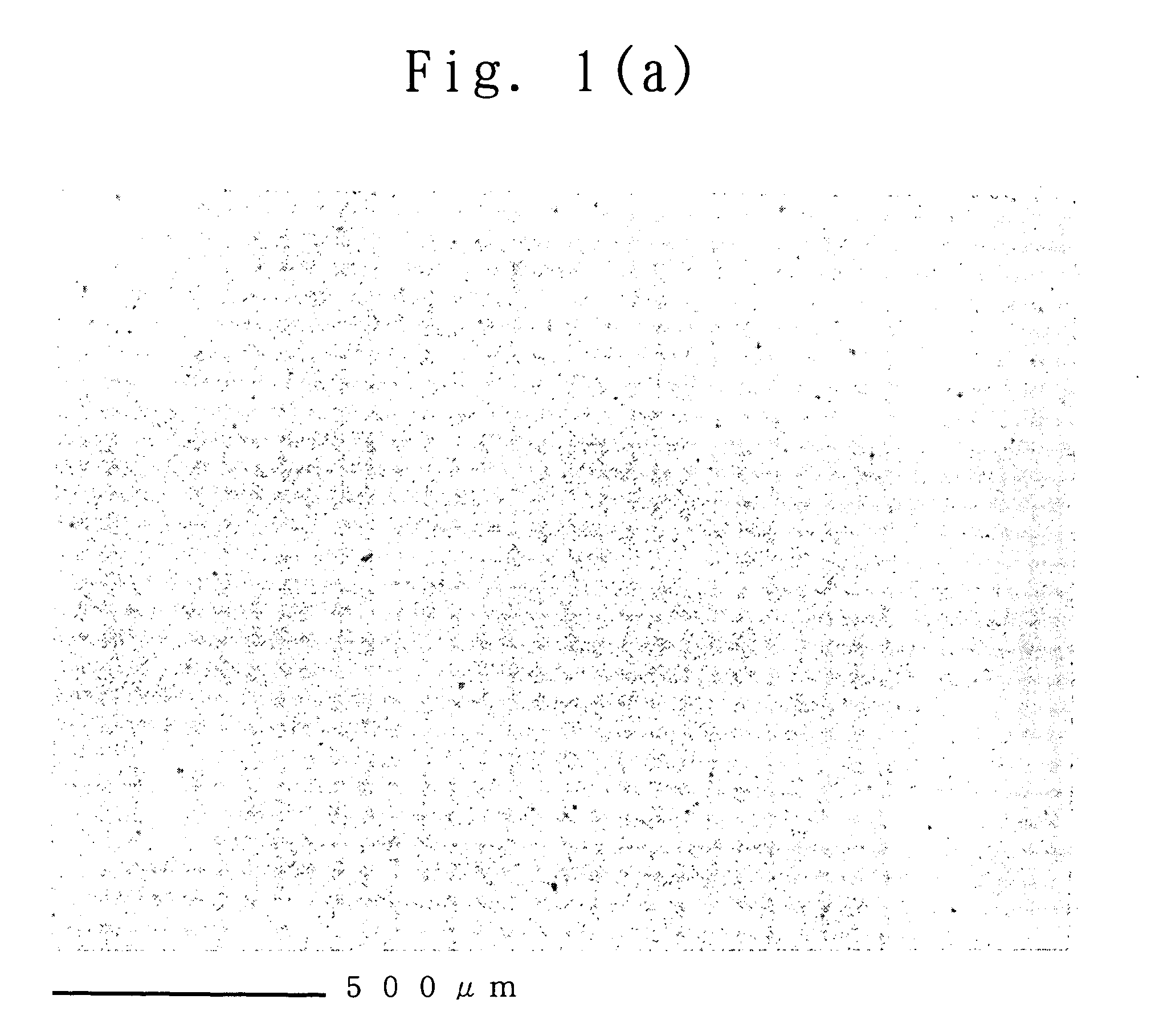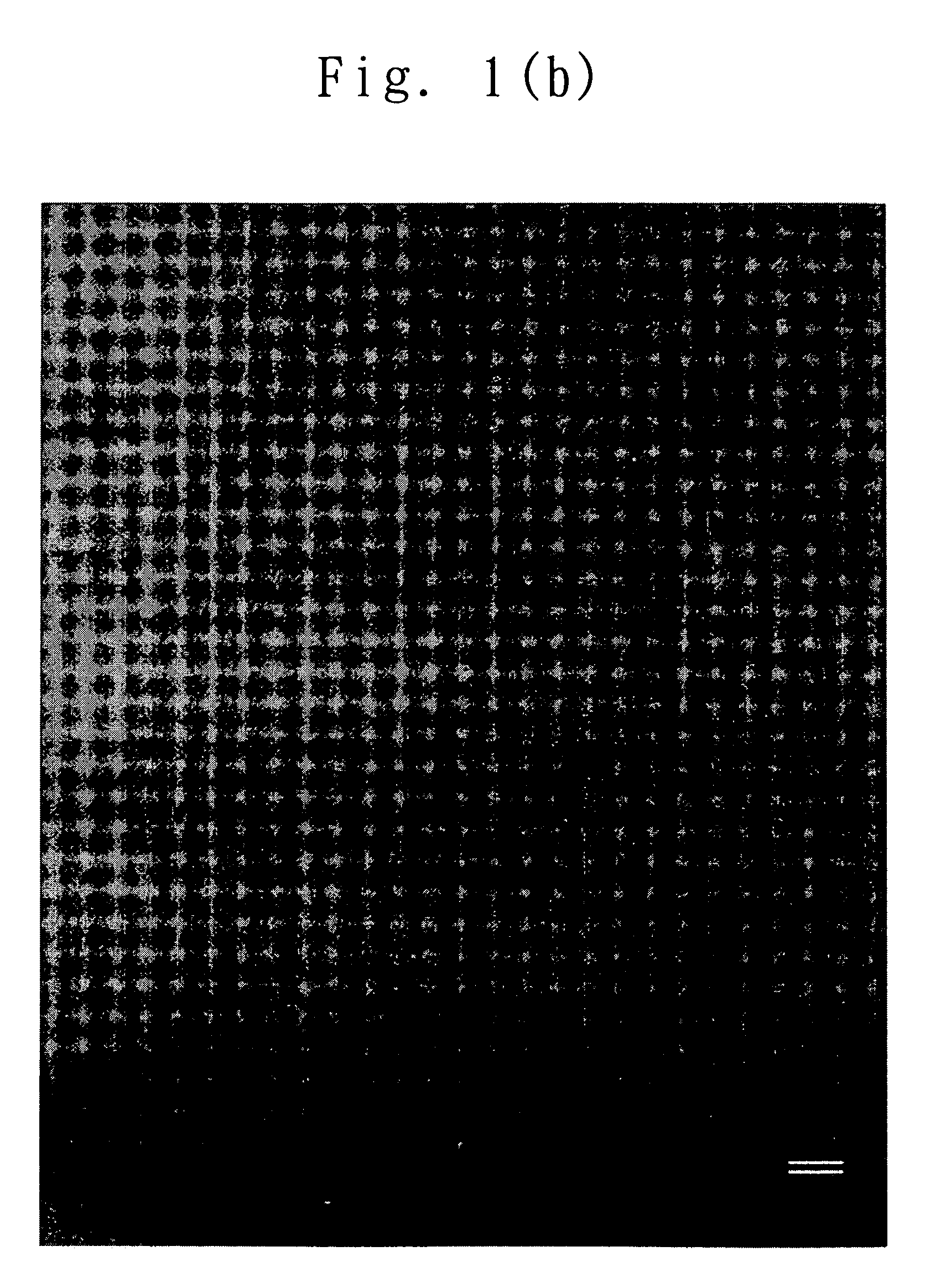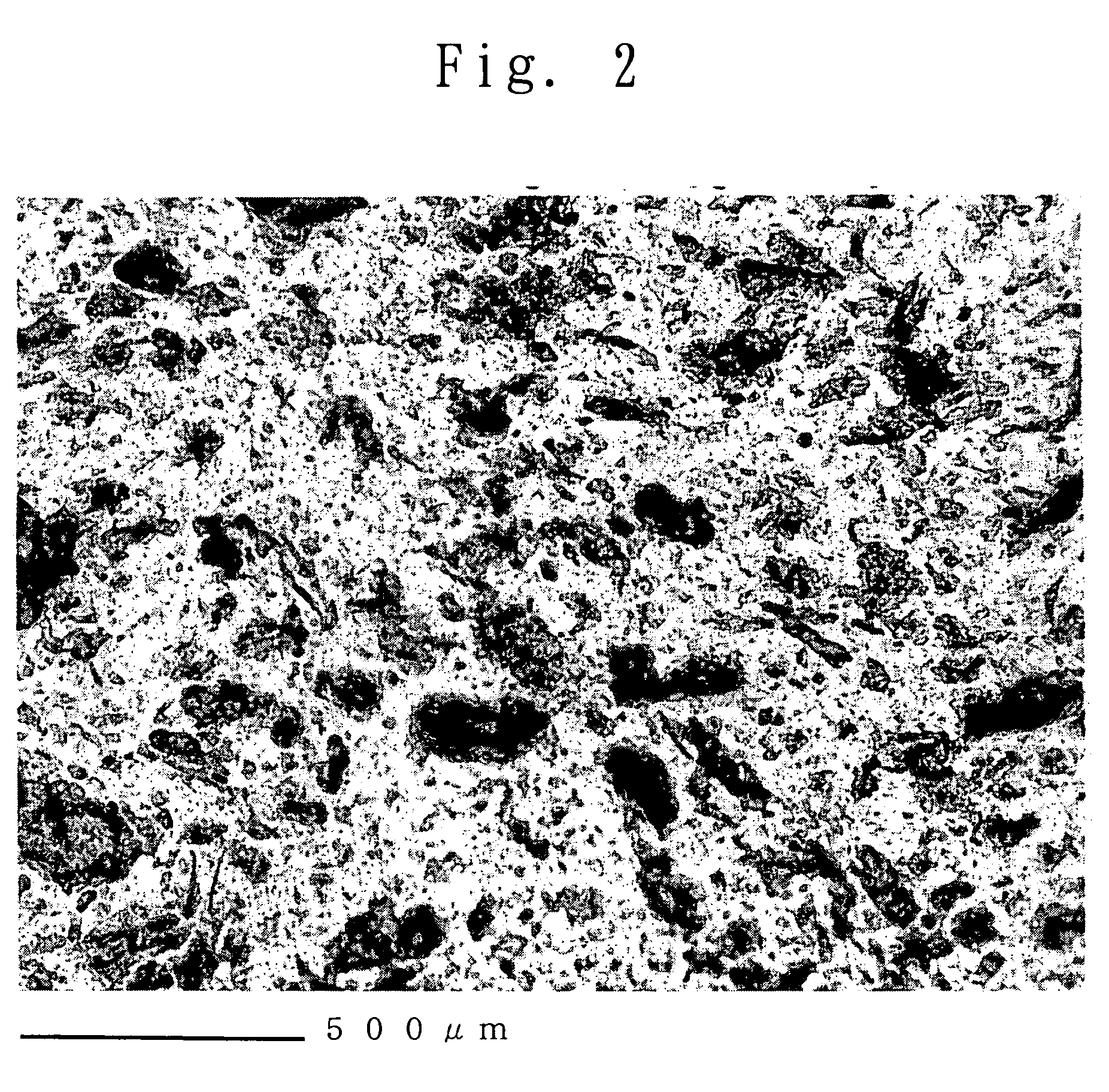Polymer electrolyte membrane having high durability and method for producing the same
a polymer electrolyte and high durability technology, applied in the direction of conductive materials, chemical/physical processes, fuel cell details, etc., can solve the problems of inability to obtain high voltage electricity, inability to achieve high voltage electricity, and inability to meet the durability of conventional proton exchange membranes, etc., to achieve excellent properties and high durability
- Summary
- Abstract
- Description
- Claims
- Application Information
AI Technical Summary
Benefits of technology
Problems solved by technology
Method used
Image
Examples
example 1
Results of Example 1 and Comparative Examples 1 to 3 are shown in Table 1.
TABLE 1Properties of membraneIonEvaluation ofBasicexchangeThick-fuel cell propertiespolymercapacityness ofOCV acceleratedInitialEvaluation of% byMilli-HazeH50membranetestpropertydurabilityweightequivalent%%μm100° C.120° C.A / cm2100° C.110° C.Ex. 12.50.770.60.650∘∘1.00∘∘(>200 hr)(>100 hr)(>300 hr)(>480 hr)Comp.0.00.910.50.551xx1.10xxEx. 1 (<40 hr) (<20 hr)(<140 hr)(<140 hr)Comp.2.50.8576.577.249∘x1.00xxEx. 2(>200 hr) (<70 hr)(<140 hr)(<280 hr)Comp.33.00.6076.574.553∘xPowerPowerPowerEx. 3(>200 hr) (<70 hr)genera-generationgenerationtion waswas impos-was impos-impos-siblesiblesible
example 2
A polymer electrolyte membrane having a PFS / PBI weight ratio of 99.0 / 1.0, an ion exchange capacity of 1.25 milliequivalents / g and a thickness of 49 μm was produced as follows, using as a fluorinated polymer electrolyte, a perfluorosulfonic acid polymer (hereinafter referred to as “PFS”) represented by the following formula:
[CF2CF2]0.812—[CF2—CF(—O—(CF2)2—SO3H)]0.188).
A perfluorocarbon polymer (MI: 3.0) of tetra-fluoroethylene and CF2═CFO(CF2)2—SO2F was produced as a precursor polymer for PFS. The produced precursor polymer was added to an aqueous solution of potassium hydroxide (15% by weight) and dimethylsulfoxide (30% by weight), and the precursor polymer was contacted with the aqueous solution at 60° C. for 4 hours, thereby performing a hydrolysis treatment. Then, the precursor polymer was immersed in water having a temperature of 60° C. for 4 hours. Subsequently, the precursor polymer was immersed in an aqueous 2N hydrochloric acid solution having a temperature of 60° C. for...
example 3
Using the same fluorinated polymer electrolyte (namely PFS) and same preliminary solutions A1, B2 and C2 as used in Example 2, a polymer electrolyte membrane having a PFS / PBI weight ratio of 98.1 / 1.9, an ion exchange capacity of 1.14 milliequivalents / g and a thickness of 51 μm was produced as follows.
6.5 g of preliminary solution A1 was added to 40.0 g of preliminary solution B2, followed by stirring. To the resultant was added 32.4 g of preliminary solution C2, followed by stirring. The resultant mixture was subjected to vacuum concentration at 80° C., thereby obtaining a casting liquid. The obtained casting liquid had a PFS concentration of 5.6% by weight and a PBI concentration of 0.11% by weight.
Using the casting liquid, the polymer electrolyte membrane of the present invention was produced in the same manner as in Example 2. The produced membrane was uniformly pale yellow but had high transparency. The haze value of the membrane was 3.2% (H50=3.1%). Further, a cross-sectio...
PUM
| Property | Measurement | Unit |
|---|---|---|
| Length | aaaaa | aaaaa |
| Fraction | aaaaa | aaaaa |
| Fraction | aaaaa | aaaaa |
Abstract
Description
Claims
Application Information
 Login to View More
Login to View More - R&D
- Intellectual Property
- Life Sciences
- Materials
- Tech Scout
- Unparalleled Data Quality
- Higher Quality Content
- 60% Fewer Hallucinations
Browse by: Latest US Patents, China's latest patents, Technical Efficacy Thesaurus, Application Domain, Technology Topic, Popular Technical Reports.
© 2025 PatSnap. All rights reserved.Legal|Privacy policy|Modern Slavery Act Transparency Statement|Sitemap|About US| Contact US: help@patsnap.com



